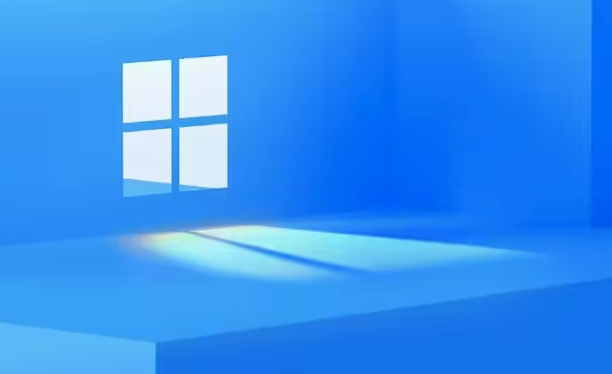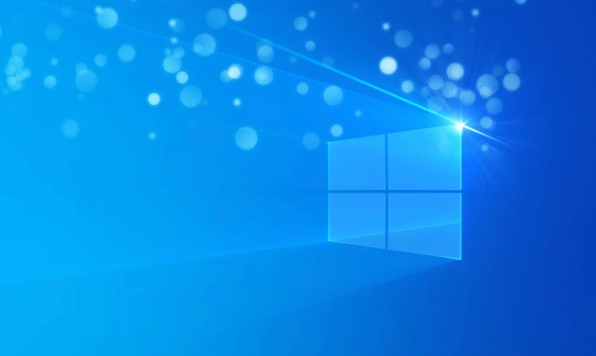The main reasons why the computer slows down after waking up from sleep include delayed network resource recovery, congestion in background programs, slow graphics card driver response and improper system settings. The solutions are: 1. Use a wired network instead or turn off the automatic mount network disk; 2. Disable unnecessary self-start programs through the task manager and check the timing tasks; 3. Update the graphics card driver and adjust the power management settings; 4. Turn off the mixed sleep and quick start function and switch to high-performance mode to optimize the system response speed.

The computer slows down after waking up from sleep, which is not uncommon on Windows 11. Usually it is not that the system is broken, but that some background services or drivers are "waking up too slowly", or that the network, hard disk and other resources have not been fully restored, which causes you to feel stuck as soon as you turn on the computer.

Below are some common reasons and practical suggestions to help you solve this problem.

Wake up slows down
The first thing many computers do when they wake up is to connect to the Internet, especially if they are connected to Wi-Fi, they may need to re-authenticate, obtain IP addresses, and even re-mount remote disks or synchronize OneDrive files. During this period, system resources are occupied, which will naturally make you feel like "a special card just woke up."
You can try:

- Plug the network cable instead of Wi-Fi to see if it improves
- Turn off the automatically mounted network disk (especially if the connection fails)
- The impact of turning off "Allow computer to turn off this device to save power" in power management on network cards
Too many background programs, starting together causes congestion
In sleep state, the program is suspended. After waking up, they all "resumed work", and some automatic update tasks also started running at this time, so the CPU and memory could not bear it at once.
It is recommended to do this:
- Press
Ctrl Shift Escto open the Task Manager, switch to the "Startup" tab, and disable unnecessary boot program - Check whether there are scheduled tasks that are executed immediately after wake-up (such as antivirus software scanning, Windows update check)
Graphics card/driver is not keeping pace
Sometimes, the graphics card driver reacts half a beat slower after sleep recovery, especially when the independent graphics card is switched to the graphics card state. You will see that the screen lights up first, but you can't react for a long time if you click anything.
Try these operations:
- Update the graphics card driver to the latest version
- Find the display adapter in Device Manager, right-click "Properties", and uncheck "Allow computer to turn off this device to save power" in the "Power Management" tab
- If using dual graphics cards, you can use the integrated graphics to wake up in the BIOS or NVIDIA control panel
System settings are not optimized properly
Windows 11 default settings are not always the most efficient, especially when features such as mixed sleep and fast boot are enabled, which can sometimes lead to incomplete wake-up or cache mess.
Recommended adjustments:
- Go to "Control Panel>Power Options>Change Schedule Settings>Change Advanced Power Settings", and set "Mixed Sleep" in "Sleep" to "Off"
- Enable "High Performance" mode in the "Power" option (for temporary testing)
- Check whether "Quick Start" is enabled, the path is "Control Panel > Power Options > Select the function of the power button", then click "Change currently unavailable settings" and uncheck "Enable Quick Start"
Basically, these common reasons and treatment methods. Although it seems a bit too much, in most cases, you only need to move one or two settings to significantly improve. There are not many really complicated problems, and many times the system default configuration is just too conservative.
The above is the detailed content of Windows 11 slow after sleep. For more information, please follow other related articles on the PHP Chinese website!

Hot AI Tools

Undress AI Tool
Undress images for free

Undresser.AI Undress
AI-powered app for creating realistic nude photos

AI Clothes Remover
Online AI tool for removing clothes from photos.

Clothoff.io
AI clothes remover

Video Face Swap
Swap faces in any video effortlessly with our completely free AI face swap tool!

Hot Article

Hot Tools

Notepad++7.3.1
Easy-to-use and free code editor

SublimeText3 Chinese version
Chinese version, very easy to use

Zend Studio 13.0.1
Powerful PHP integrated development environment

Dreamweaver CS6
Visual web development tools

SublimeText3 Mac version
God-level code editing software (SublimeText3)

Hot Topics
 How to remove password from Windows 11 login
Jun 27, 2025 am 01:38 AM
How to remove password from Windows 11 login
Jun 27, 2025 am 01:38 AM
If you want to cancel the password login for Windows 11, there are three methods to choose: 1. Modify the automatic login settings, uncheck "To use this computer, users must enter their username and password", and then restart the automatic login after entering the password; 2. Switch to a passwordless login method, such as PIN, fingerprint or face recognition, configure it in "Settings>Account>Login Options" to improve convenience and security; 3. Delete the account password directly, but there are security risks and may lead to some functions being limited. It is recommended to choose a suitable solution based on actual needs.
 I Became a Windows Power User Overnight With This New Open-Source App from Microsoft
Jun 20, 2025 am 06:07 AM
I Became a Windows Power User Overnight With This New Open-Source App from Microsoft
Jun 20, 2025 am 06:07 AM
Like many Windows users, I am always on the lookout for ways to boost my productivity. Command Palette quickly became an essential tool for me. This powerful utility has completely changed how I interact with Windows, giving me instant access to the
 How to uninstall programs in Windows 11?
Jun 30, 2025 am 12:41 AM
How to uninstall programs in Windows 11?
Jun 30, 2025 am 12:41 AM
There are three main ways to uninstall programs on Windows 11: 1. Uninstall through "Settings", open the "Settings" > "Apps" > "Installed Applications", select the program and click "Uninstall", which is suitable for most users; 2. Use the control panel, search and enter "Control Panel" > "Programs and Functions", right-click the program and select "Uninstall", which is suitable for users who are accustomed to traditional interfaces; 3. Use third-party tools such as RevoUninstaller to clean up more thoroughly, but pay attention to the download source and operation risks, and novices can give priority to using the system's own methods.
 Windows 11 Is Bringing Back Another Windows 10 Feature
Jun 18, 2025 am 01:27 AM
Windows 11 Is Bringing Back Another Windows 10 Feature
Jun 18, 2025 am 01:27 AM
This might not be at the top of the list of features people want to return from Windows 10, but it still offers some usefulness. If you'd like to view the current minutes and seconds without turning on that display in the main taskbar clock (where it
 How to run an app as an administrator in Windows?
Jul 01, 2025 am 01:05 AM
How to run an app as an administrator in Windows?
Jul 01, 2025 am 01:05 AM
To run programs as administrator, you can use Windows' own functions: 1. Right-click the menu to select "Run as administrator", which is suitable for temporary privilege hike scenarios; 2. Create a shortcut and check "Run as administrator" to achieve automatic privilege hike start; 3. Use the task scheduler to configure automated tasks, suitable for running programs that require permissions on a scheduled or background basis, pay attention to setting details such as path changes and permission checks.
 Windows 10 KB5061087 fixes Start menu crash, direct download links
Jun 26, 2025 pm 04:22 PM
Windows 10 KB5061087 fixes Start menu crash, direct download links
Jun 26, 2025 pm 04:22 PM
Windows 10 KB5061087 is now rolling out as an optional preview update for those on version 22H2 with Start menu fixes.
 Microsoft: DHCP issue hits KB5060526, KB5060531 of Windows Server
Jun 26, 2025 pm 04:32 PM
Microsoft: DHCP issue hits KB5060526, KB5060531 of Windows Server
Jun 26, 2025 pm 04:32 PM
Microsoft confirmed that the DHCP server service might stop responding or refuse to connect after the June 2025 Update for Windows Server.
 Building Your First Gaming PC in 2025: What You Actually Need
Jun 24, 2025 am 12:52 AM
Building Your First Gaming PC in 2025: What You Actually Need
Jun 24, 2025 am 12:52 AM
In the past, I always viewed the i5 lineup as anemic when it came to gaming. However, in 2025, a mid-range CPU is more than enough to start your gaming journey. Many games still don’t fully utilize multi-core performance as well as they could, so






